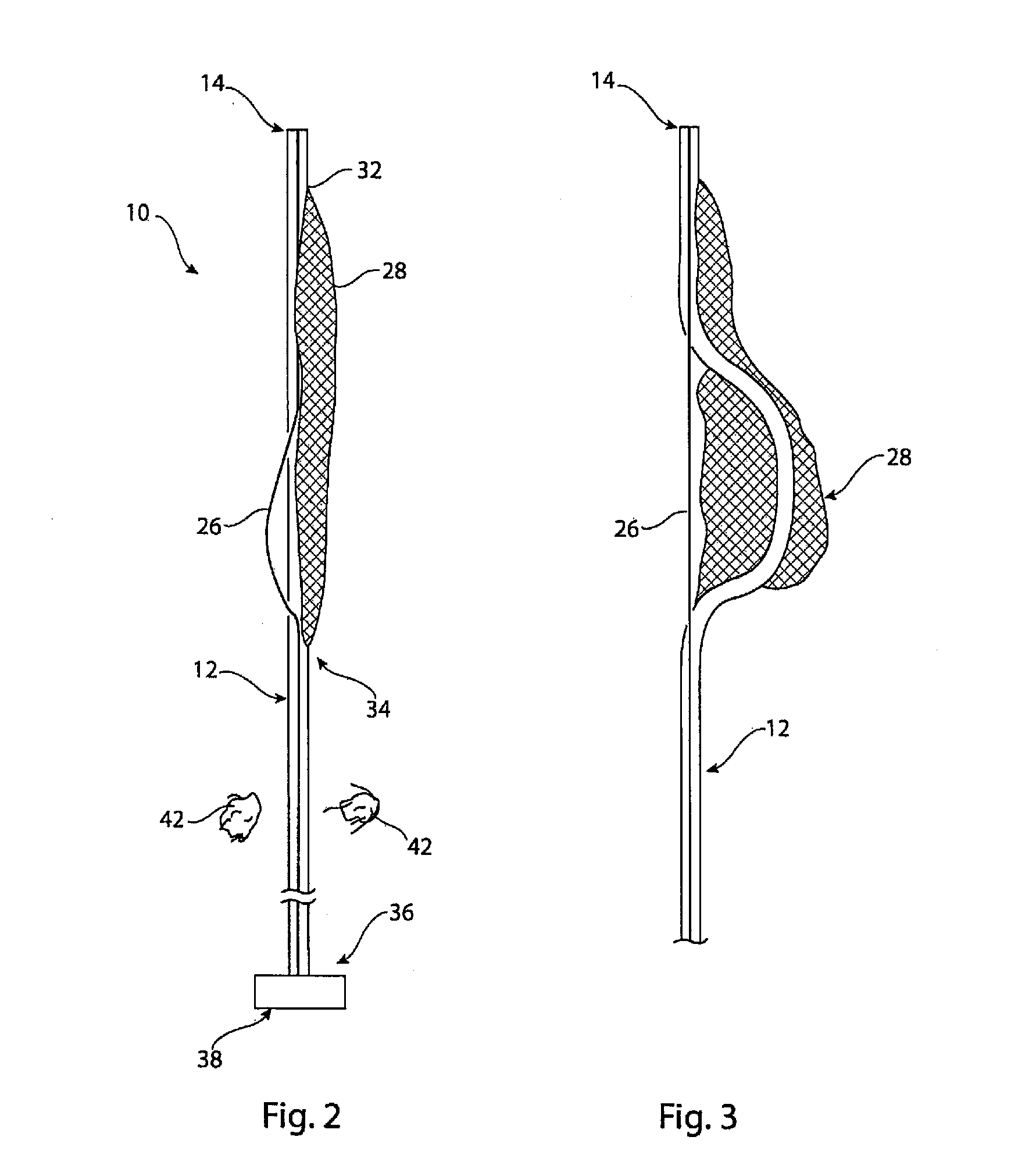Obstruction capture and removal device
a technology which is applied in the field of obstruction capture and removal device, can solve the problems of thrombosis during surgery, inability to house the thrombus within the lumen of the catheter, and too small catheter siz
- Summary
- Abstract
- Description
- Claims
- Application Information
AI Technical Summary
Benefits of technology
Problems solved by technology
Method used
Image
Examples
Embodiment Construction
[0027]It is to be understood that the Figures are schematic and do not show the various components to their actual scale. In many instances, the Figures show scaled up components to assist the reader in the understanding of the features disclosed therein.
[0028]In this description, the term distal is used to refer to an end of a component which in use is furthest from the surgeon during the medical procedure, including within a patient. The term proximal is used to refer to an end of a component closest to the surgeon and which, in practice, may be in or adjacent an external manipulation part of the deployment or treatment apparatus.
[0029]Referring now to FIG. 1, there is shown schematically an embodiment of object removal device 10 which can be used for retrieving obstructions, such as thrombi, from patient vessels. The device 10 shown in FIG. 1 would typically be introduced into the vasculature of a patient via a carrier sheath, of a type well known in the art.
[0030]The device 10 i...
PUM
 Login to View More
Login to View More Abstract
Description
Claims
Application Information
 Login to View More
Login to View More - R&D
- Intellectual Property
- Life Sciences
- Materials
- Tech Scout
- Unparalleled Data Quality
- Higher Quality Content
- 60% Fewer Hallucinations
Browse by: Latest US Patents, China's latest patents, Technical Efficacy Thesaurus, Application Domain, Technology Topic, Popular Technical Reports.
© 2025 PatSnap. All rights reserved.Legal|Privacy policy|Modern Slavery Act Transparency Statement|Sitemap|About US| Contact US: help@patsnap.com



